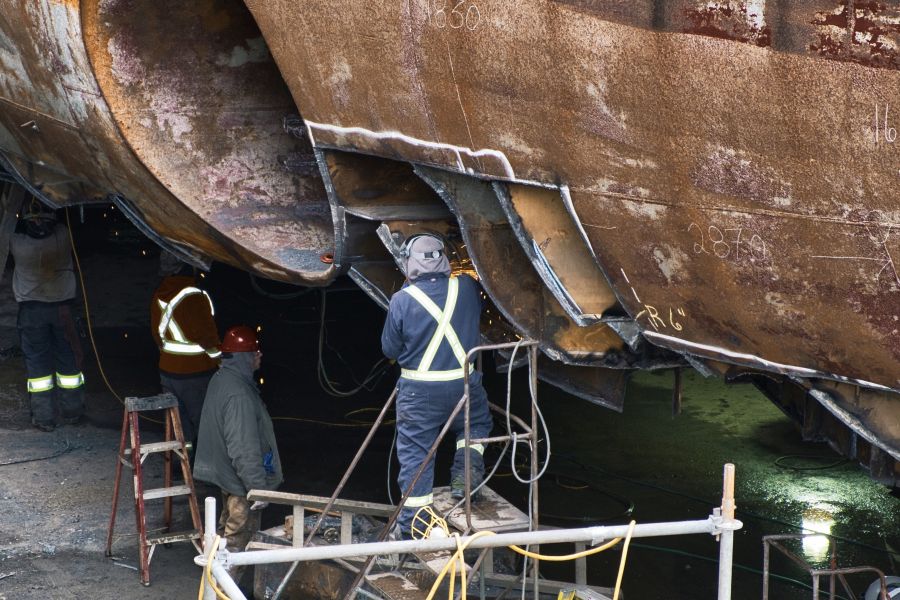Two massive bulk carriers sit side-by-side, nestled in the cocoon created by the Port Weller drydocks on the western edge of Niagara-on-the-Lake, south of Lock One on the Welland Canal.
Like two dowager sisters, the Rt. Hon. Paul J. Martin and the Kaministiqua, both Canadian-flagged vessels, sit patiently for their five-year seaworthiness review and the facelift that will send them out again to ply the ports of the Great Lakes. Both arrived over the last six weeks.
The Paul Martin is almost 50 years old, the senior, by a decade, of the Kaministiqua. They look their ages, a little worn, but experienced.
Both ships are very close to the maximum size navigable through the St. Lawrence Seaway. Longer than the Kaministiqua by just 10 feet, at 739 feet, the Paul Martin, literally just fits the modern canal locks. There are larger ships on the Great Lakes, but their 1,000-foot lengths never leave Lake Superior.
Built in Glasgow, Scotland, and launched as the Voyageur Pioneer some 36 years ago, the Kaministiqua is called a “Salty-Laker,” capable of delivering both sea and lake-bound cargos. She began her ocean voyages in late 1983, with grain loaded in Duluth, Minn., bound for France.
Like many vessels sailing the Great Lakes, the Kaministiqua has had many owners, many names, many cargos and many colours. In 2008, she was registered by Lower Lakes Towing Ltd., a division of Rand Logistics of New York. During her career she has carried coal, soybeans, steel, canola, iron ore, sugar, barley and other grains.
Her name comes from the Kaministiqua River, a small estuary just west of current-day Thunder Bay. It was frequented by early coureurs des bois.
The Rt. Hon. Paul J. Martin was launched from its Collingwood, Ont., shipyard, directly into Great Lakes steel shipping. Now owned by Canada Steamship Lines, the ship first came to the Port Weller drydocks in 1999 for a major hull replacement, a massive project. An entirely new, larger hull was constructed and joined to the former engine-room section.
Ted Kirkpatrick, business development manager at Heddle Shipyards, the new operator on the Port Weller drydocks, describes the work underway on the two vessels as big projects.
“The Paul Martin is the bigger of the two, but they are both substantial,” he says. The projects are a boon to Heddle. “We’ll do more revenue in the first three months of 2020, than we did in all of 2019.”
While the ships spend their winter at Port Weller, in addition to their five-year seaworthiness survey and any steel work that arises from that assessment, each owner gives Heddle a long list of maintenance projects and improvements to complete, including complete blasting and paint work.
So, with any luck and a lot of effort, the Kaministiqua and the Paul Martin will once again join the roughly 90 Canadian-flagged ships on the Greats Lakes, when the seaway opens in March.
A big job, indeed.










